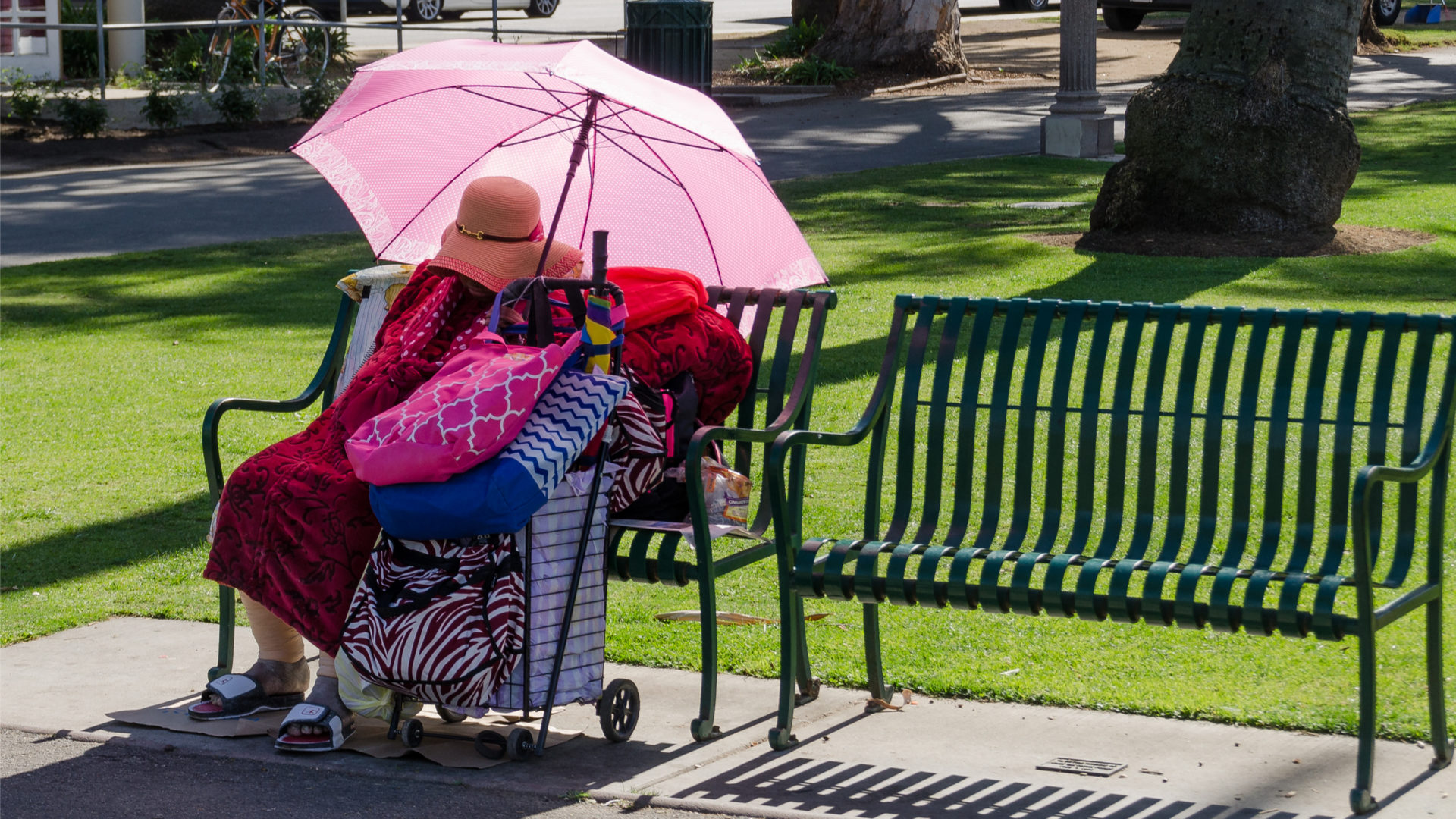Reflections on Solving Homelessness in America

 David Hadden serves on the Melville Trust Board. This is an excerpt of a presentation he shared about the causes of homelessness in America, and what we know about solving it.
David Hadden serves on the Melville Trust Board. This is an excerpt of a presentation he shared about the causes of homelessness in America, and what we know about solving it.
A peculiar thing about me is a Sunday evening ritual I have developed, when I take the trash down to the curb. What I love is the walk back up to my house. Every week I feel awash with gratitude for the safe place where my wife and I live and where our three kids grew up, and for my life to have unfolded from this rooted place. Every week I offer a quiet prayer of thanks to a deity I trust is listening. I often then think about those who aren’t in the same position: those who are experiencing homelessness.
Residents and visitors to almost any city in the country don’t need statistics to know that we live among others who sleep on the streets. Based on the most recent HUD data, roughly 580,000 people experience homelessness in the United States on a given day. We know that is a low estimate, because the number is based on the coordinated effort of volunteers counting people they find on a given night in January. It is noble and important work but the “Point in Time count” misses people living in cars, doubled up, sleeping on couches, and those who lose their housing over the course of the year. Covid has only made an accurate count more difficult.
While homelessness is seen as a sad reality of modern life, it is actually a new phenomenon in our country. I remember when it was shocking to see someone living on the streets. Through the 1970’s we had an adequate supply of affordable housing. Families who experienced a crisis and lost their housing could quickly find another place to live.
That is not the case anymore. And in a uniquely American way, homelessness is spoken of as an unsolvable problem caused by irresponsible personal choices. The truth is that people lose their housing primarily because of lost or low income, sky-high rents and decades of under-investment in housing. In other words, homelessness and unstable housing are far more products of social and economic policy, than personal choice.
The impact of housing policies
The Trust focuses much of its work on housing policy and through our grantmaking I’ve learned that housing funding and regulations in the United States have always favored those of us who are well off and white. For example, federal housing assistance funding for low-income people, adjusted for inflation, was reduced by 4.6% between 2010 and 2016 due to budget cuts affecting non-defense discretionary programs. Meanwhile, about 60% of our federal housing spending (including mortgage interest and property tax deductions) benefits households with incomes over $100,000.
We as a country have chosen to support upper income home ownership at the expense of lower income renters. And the results are stark. Today, 8 million households in the United States spend more than 50% of their income on rent. For these millions of people, one missed paycheck, one medical emergency or one family crisis with no financial cushion can easily result in the loss of a home.
Karen Dubois-Walton, the President of Elm City Communities/ Housing Authority of the City of New Haven and the newly elected Board Chair of the Melville Charitable Trust, recently reminded us that in order to afford a two-bedroom apartment in Connecticut, one needs to earn at least $27.37 per hour. The Connecticut minimum wage is $13 per hour. The federal minimum wage is $7.25.
And we can’t understand the dynamic of homelessness without appreciating the impact of our country’s racial history. Homelessness and housing instability are visible symptoms of policies that have systemically excluded people of color from opportunity. That is why African Americans make up 13% of the total U.S. population but account for 40% of people living without a home.
A few notable examples of policies that have contributed to inequitable housing opportunities stem from our historically racist zoning laws. At the turn of the 20th Century, zoning laws explicitly prevented African Americans from owning property in certain areas. While the U.S. Supreme Court found racial zoning laws unconstitutional in Buchanan v. Warley (1917), since then municipalities have found alternative segregation strategies, such as limiting residential housing by ordinance to single family homes resulting in predominately white middle class ownership in those areas. The clear and convincing generational impact of these public policies on persons of color is beyond dispute. For a thorough review of this perspective, I recommend Richard Rothstein’s, The Color of Law, and in particular his documentation of the construction and evolution of segregated public housing projects from World War I up through the 1970’s.
Reasons for hope
Given the history of exclusion and underinvestment in communities of color, optimism might seem naïve. But I see strong reasons for hope. 580,000 people experiencing homelessness in the U.S is .0017%, or less than 2/10ths of one percent of our entire population. Is it not reasonable to think that the remaining 99.8% of Americans collectively have the resources, as well as the will, to ensure that our neighbors and family members in need can secure a safe place from which to anchor their lives?
We as a country have fought and won harder battles.
My home state of Connecticut offers a model of success. On any given night in our state the number of people experiencing homelessness is close to 3,000. That’s 3,000 too many. Unlike the recent national trend, however, Connecticut has continued to make steady progress toward ending homelessness.
Work to solve homelessness in Connecticut centered around a collaboration of cross sector partners focused on policy change. That approach has been successful. Since 2004 Connecticut’s homeless population has decreased 51%, and shelter use has decreased 40% since 2012. Chronic homelessness (referring to people who have been homeless for at least a year or repeatedly while experiencing a disabling condition) has decreased by 75% since 2014.
I do not mean to imply we have gotten it all right. There is still significant work to do to solve homelessness and ease the cost burdens households face, but it is clear that we know how to do this work. We have a broad array of successful tools at our disposal. What we need is the public and political will to apply them persistently and at scale.
So, I have added a new prayer to my Sunday evening trash to curbside ritual. In addition to gratitude for the roof over my family’s heads, I ask that all our neighbors have a safe and secure place to call home, and that our elected leaders transform public policies to end the cycle of homelessness.
